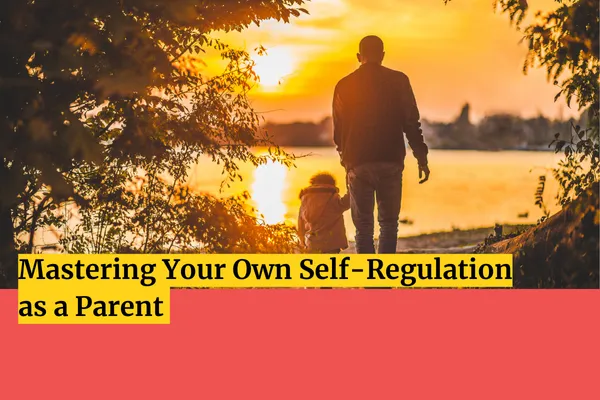
Mastering Your Own Self-Regulation as a Parent
Mastering Your Own Self-Regulation as a Parent
The other day, I saw a reel on Instagram that said when the mom looked back on her children’s pictures, she was sad because she felt like she couldn’t enjoy that stage because she was so overwhelmed. I related to it so hard. Even though I’m an expert on positive parenting, I STILL struggle with my kids at times.
I enjoy raising my children, but there are so many times I feel overstimulated! Like when my kids are having fun, but they’re SO LOUD! I hope my children remember the fun mom and not the yelling mom when they are older. This is why I focus so heavily on self-regulation. Do you ever feel like parenting becomes so overwhelming you don’t stop to appreciate and enjoy your children on a daily basis? Keep reading for tools and strategies for how to self-regulate yourself to better support your child.
Understanding Self-Regulation
First of all, what is self-regulation? Self-regulation allows us to manage our emotions and behaviors in response to external circumstances. For example, when I’m overstimulated because of too much noise in my house, my body is dysregulated. When I’m dysregulated, my anger is a short fuse. I want to scream. I just need everything to stop to have space and time to think.
A self-regulation strategy that I can use is to put on noise-canceling headphones or go in a quiet room alone. This helps because everything is not so loud. There is distance between myself and the chaos.
Why Self-Regulation Matters in Parenting
Parenting is like being a captain navigating through both calm and stormy seas. If the captain loses their cool, the ship veers off course. Similarly, if we lose our grip on our own emotions, we escalate conflicts and miss the chance to teach our children how to handle their own emotions.
It’s important to stay regulated when our children are dysregulated so that we can help them through their own emotions. We can lead by example when frustration arises, even when everything inside you wants to scream and react impulsively (You can totally be screaming inside and mentally stomping your feet and still calmly ask your child what’s wrong).
When one of my kids is having a meltdown it’s always better when I can self-regulate in order to co-regulate with them and calm things down. If I also let my emotions go, it escalates the situation and my kid’s emotions to a crisis point. If I can self-regulate, I can help my child self-regulate and calm down.
Steps to Enhance Your Self-Regulation
1. Recognize Your Triggers: Self-awareness is the first step. What sets you off? Is it a particular time of day, specific behaviors, or personal stressors? Identifying your triggers can help you plan for them. When you are calm, make a plan for what you’ll do when you start escalating.
2. Develop Coping Strategies: Once you know your triggers, develop a plan to deal with them. This could be deep breathing, stepping away momentarily, or using a calming mantra. You can also drum, improvise on the piano, or sing to calm down. Experiment to find what works best for you.
3. Practice Mindfulness: Mindfulness isn't just a pop culture term; it's a practical tool. By staying in the moment, you can focus on the here and now, not past frustrations or future worries.
4. Set Realistic Expectations: Sometimes, our reactions are fueled by unrealistic expectations. Acknowledge that there will be good days and bad days. Accepting the ebb and flow of parenting can help you maintain a steady emotional state.
Self-regulation isn't about suppressing your emotions. It's about managing them in a way that allows you to be the parent you want to be and that your child needs. You can be a model for your child as you learn to self-regulate. You can show them that what happens around us does not have to dictate how we react. We can have a plan and act accordingly.
Remember that, like most things, learning self-regulation strategies takes time. It takes time to create new neural pathways in your brain. Be kind to yourself as you navigate self-regulation.
I would love to hear how you manage self-regulation and any tips you have for fellow parents. Please share your thoughts and experiences in the comments below, email us at [email protected], or DM us on Instagram @boisemusictherapy.
